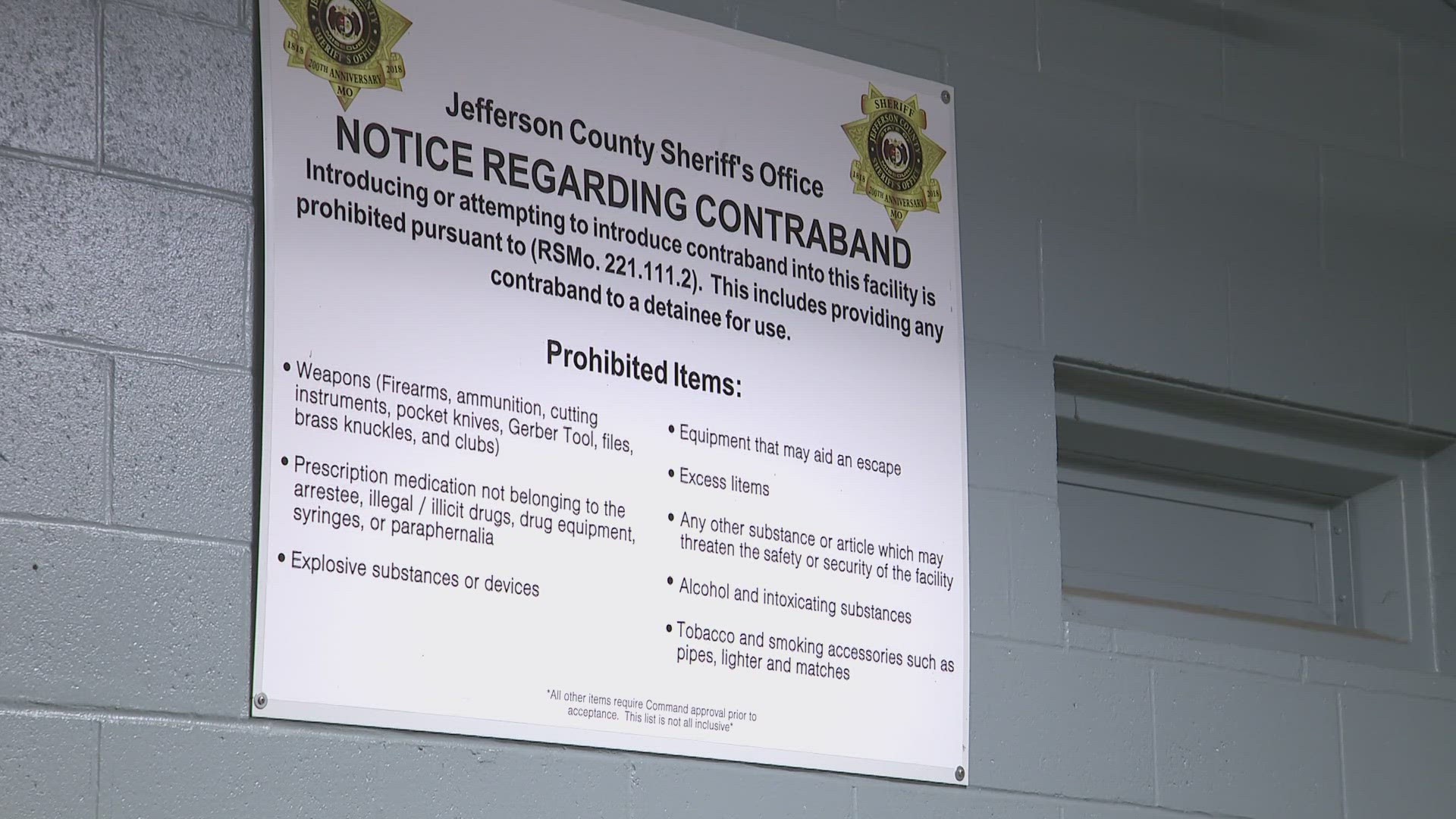HILLSBORO, Mo. — In 2021, the Jefferson County Sheriff’s Department knew it had a drug problem in its jail.
It was the first year officials started keeping track of how often inmates overdosed, said Grant Bissell, spokesman for the sheriff’s department.
That year, there were six in the jail where the population as of Tuesday was 244. The population sometimes rises above 300, Bissell said.
“The amount of Fentanyl that it takes can be very easily hidden in a lot of different places,” Bissell said. “We've had people jamming the little pills underneath toenails or tying it up inside of tight hair braids where it's very difficult to spot. And just that tiny little amount can do a lot of damage inside of a jail facility.”
Jefferson County jail is not alone in its struggle to keep drugs out of a correctional facility.
Between Oct. 15 and Nov. 15 alone, EMS workers responded to the City Justice Center in downtown St. Louis eight times for suspected overdoses. The city's jail population is more than double Jefferson County's.
Jail Commissioner Jennifer Clemons-Abdullah told the I-Team last week that she didn’t have the number of overdoses that have happened at the jail.
She would not share what’s being done to stop drugs from coming into the facility, citing safety and security reasons.
The overdoses are among several reasons why activists are calling for Mayor Tishaura Jones to fire her.
Bissell said the sheriff’s department reduced the number of overdoses at its jail to just one in 2022 and two so far this year. He credits a $125,000 body scanner, changing inmate mail protocols and increasing how often cells get searched.
“They've detected everything from what we believe to be meth, heroin, fentanyl, cocaine,” Bissell said. “People try to hide it in different places in their body. They can see that on the scanner.”
Clemons-Abdullah said she was not sure what protocols the police department uses for inmates coming into the jail, but said the Corrections Division has a body scanner.
The Jefferson County jail also began a new protocol when it comes to inmate mail.
“Letters would be soaked in some sort of liquid, and the drug-laced paperwork would get inside and then detainees would tear a little piece of the paper off, and put it on their tongue and let it dissolve,” Bissell said.
Now, inmates still open their own mail, but they must do so in front of a guard and give it back to the guard, who then makes photocopies of the original documents. Inmates can only keep the copies guards make for them, and originals are kept with their personal belongings outside their cells.
The new protocol has given some inmates some anxiety.
“If they are nervous that maybe they're not getting the things that they used to get in, that means we're doing our job better than we were before,” Bissell said.

